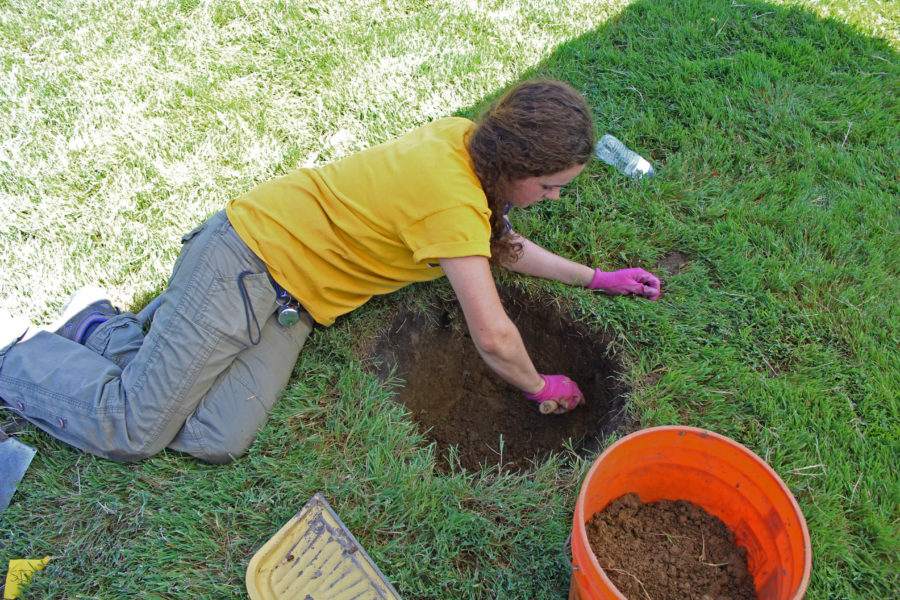Members of the Vandal community spent hundreds of hours digging into Boise’s history this summer.
Anthropology professor Mark Warner said the main purpose for the dig was to fulfill a legal requirement.
Warner said they needed to figure out whether cultural and environmental resources were going to be impacted by construction before the project began.
The process started with metal detectors to find the most populated areas, which the crew then focused most of their efforts on. Warner said there were more than 1,800 metal detection hits on the site, so they had to dig in order to answer the question and figure out if extra excavation needed to happen before construction began.
Warner also said the University of Idaho has become well-known for archeology, and by doing these kinds of projects in Boise they provide benefits other than just fulfilling a contract.
“This is a way to engage a community with its history, provide training opportunities for students and reach a much wider audience than most projects do,” Warner said.

Diamond Koloski | Argonaut
Junior Emma Scott digs a shovel test probe at the Fort Boise dig site earlier this summer.
He said it’s also providing students with an opportunity to give them hands-on training for their careers in anthropology, like anthropology and history major Rachel Falzon.
Falzon was one of the participants in the archaeological site dig at Fort Boise this summer, working five days a week over the course of the project.
“Once we find things in the ground, they yell at me to help them with the paperwork,” Falzon said. “I’m the lab director, so then I’ll work with volunteers to clean the artifacts.”
She said the artifacts then go to Moscow for more in-depth cleaning and processing.
Among the artifacts found were a toy coin, a button for sleeves and a shell casing from an interior primer shell for a .45 pistol. But Warner said there wasn’t anything to lead them to believe more work needed to be done on the old federal military base.
Alec Sherer said he came to Boise for his master’s degree at Boise State University, and heard about the project on NPR one morning and decided to go check it out during his free time. He then ended up volunteering regularly.
“Growing up, my family and I would go to museums, and I always loved the ones where we could go and actually do things … We had a big back yard and I liked going out and just digging a bunch of holes,” Sherer said.
He said those are memories that made him become interested in volunteering originally, but since starting he has also enjoyed the sunshine and spending time with people and thinks history is really interesting.
Warner said this was the fourth project in five years they’ve done in the Boise area, and estimates about 3,000-4,000 volunteer hours have been logged in that time frame.
Falzon said the project was a great experience and she is eager to continue her work in the field.
Diamond Koloski
can be reached at
or on Twitter @diamond_uidaho